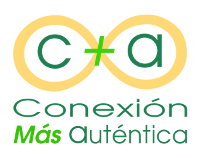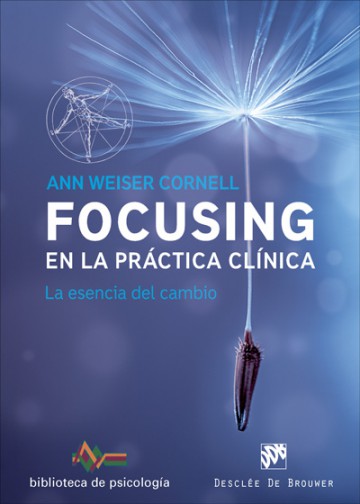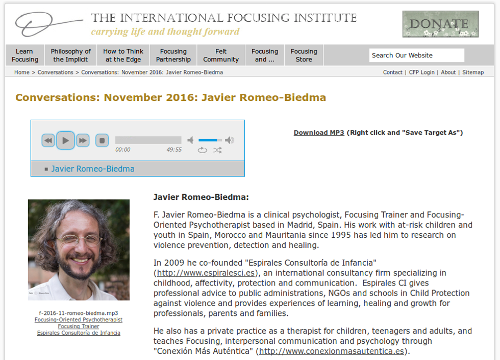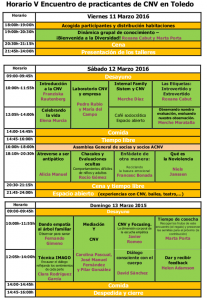Label: My Classifieds
my article “Combining Focusing and Nonviolent Communication”, translated into Japanese: Intersection of the focusing and the non-violent communication
9 February 2017.
Tags: Agenda actual, CNV, Interpersonal communication, Focusing community, Focusing, Focusing international, In English, My Classifieds, Texts CNV, Textos Focusing
Text in Spanish – Japanese – Click here to read in English
Focusing International Conference in Cambridge (United Kingdom) in July 2016 continues to bear fruit.
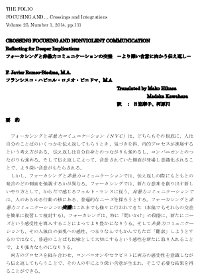 Today I have the honor to present the translation of my article “Combining Focusing and Nonviolent Communication. Reflecting deeper implications for” (appeared in 2014 in The Folio. A Journal for Focusing and Experiential Therapy) Japanese, with the suggestive title “Focusing and non-violent communication intersection of - towards the deeper implications tell-back -“.
Today I have the honor to present the translation of my article “Combining Focusing and Nonviolent Communication. Reflecting deeper implications for” (appeared in 2014 in The Folio. A Journal for Focusing and Experiential Therapy) Japanese, with the suggestive title “Focusing and non-violent communication intersection of - towards the deeper implications tell-back -“.
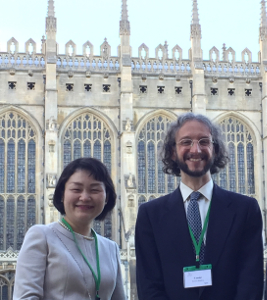
Con Madoka Kawahara (Kawahara circle).
Cambridge had the pleasure to meet Madoka Kawahara (Kawahara circle), Focusing training psychotherapist who had initiated the translation of the article a while back, already Mako Hikasa (Mako Hikasa), Focusing renowned Coordinator, which joined the project in its final phase translation. Our discussions from that meeting made the project proceed, and now there is this careful translation is available on the website Focusing Japanese Association (Japan Focusing Association), and I reproduce here with his permission.
From here I want to express my deep appreciation for their efforts and dedication (there have been many emails back and forth to clarify concepts and terms) so you can know this aspect of Focusing among many practitioners and professionals Focusing Japan.
In deep appreciation,
Cambridge 27th International Focusing Conference, which was held in (the UK)It is、It has brought a more abundant achievements。
 now、I、paper"Intersection of the focusing and the non-violent communication - deeper implications toward tell-back -"("Journal for focusing and experiencing therapy"The Folio. A Journal for Focusing and Experiential TherapyVol. 25, No. 1、2014I am honored to be posted on the year) has been translated into Japanese。
now、I、paper"Intersection of the focusing and the non-violent communication - deeper implications toward tell-back -"("Journal for focusing and experiencing therapy"The Folio. A Journal for Focusing and Experiential TherapyVol. 25, No. 1、2014I am honored to be posted on the year) has been translated into Japanese。

Madoka Kawahara
In Cambridge、Mr. counselor Madoka Kawahara undergoing focusing training Ya、There was a happy encounter with renowned certification focusing Coordinator Mako Hikasa。Because、And Ms. Madoka Kawahara is already working on this translation、And in the final stage of the project、Mako HikasaIt has been added。After the International Conference、Keep in touch us towards the translation completed、Then now、The exact Japanese translation has been completed。this is、Japan focusing association's Web siteYou can read in。Than the association、We received the authorization of the link posted。
To me is a certain enthusiasm and their interest effort、Deeply Thank you。In order to clarify the concepts and nuances、It was frequently exchanged e-mail。Many of certified Focusing trainers and practitioners of Japan、Because becomes an opportunity to get to know this aspect of focusing。
Gratitude
The International Focusing Conference 2016 in Cambridge (United Kingdom) keeps bringing more fruits.
 Now I have the honor of presenting my article “Crossing Focusing and Nonviolent Communication: Reflecting for Deeper Implications”, that appeared in The Folio. A Journal for Focusing and Experiential Therapy in 2014, translated into Japanese with the title “Focusing and non-violent communication intersection of - towards the deeper implications tell-back -“.
Now I have the honor of presenting my article “Crossing Focusing and Nonviolent Communication: Reflecting for Deeper Implications”, that appeared in The Folio. A Journal for Focusing and Experiential Therapy in 2014, translated into Japanese with the title “Focusing and non-violent communication intersection of - towards the deeper implications tell-back -“.

With Madoka Kawahara (Kawahara circle).
In Cambridge I had the pleasure of meeting Madoka Kawahara (Kawahara circle), a psychotherapist trained in Focusing who had already started the translation some time ago, and Mako Hikasa (Mako Hikasa), a renowned Focusing Coordinator that joined the project in its final stages. The conversations we had after that encounter have brought the work to its completion, and now we have this precise translation, that is available on the website of the Japan Focusing Association (Japan Focusing Association), reproduced here with permission.
I want to express my profound gratitude for their interest and hard work –there have been lots of e-mails to clarify concepts and nuances– to make possible that this aspect of Focusing might be known among the numerous Focusing professionals and practitioners in Japan.
In gratitude,
Manual “Focusing in clinical practice” de Ann Weiser Cornell (translated by F. Javier Romeo)
29 November 2016.
Tags: Agenda actual, Focusing, Focusing in Spain, Focusing international, My Classifieds, Psychotherapy, Therapy, Textos Focusing
It is a pleasure for me to share publishing Focusing in clinical practice. The essence of change, the last book Ann Weiser Cornell in Spanish, in this case translated by me.
In a carefully edited within the Psychology Library of Editorial Desclée, This book appears thanks to the joint work of many people, I thank you from here.
First, Ann Weiser Cornell He has been willing to publish the book (which first it appeared in the prestigious American publishing mental health W. W. Norton), and it has been in the translation every nuance, answering various questions and looking me the words tighter each of its concepts and expressions. He has contributed a warm prologue to the Spanish edition (which can be read in the promotional booklet), in which he says:
In this book I have tried to explain the Focusing simply but without losing the complexity that makes it so special. I tried to make this book very practical, so that the clinician can use immediately. (P. 18)
On the other hand, the urge Isabel Gascón, National Coordinator and my mentor Focusing Focusing, you have set the book, from coordinating with the publisher until complete review of the drafts and a presentation to the Spanish edition which it highlights the interest of this book in the Spanish-speaking world (also available in promotional booklet).
By last, It is appreciated the concern and care of the editorial team Desclée, who has worked for a clear and elegant book, in one of the most prestigious collections of psychology in Spain.
In future posts I will comment more aspects that I find this book useful. By the time I leave you with the index (which is extended here), I will comment on the various chapters in other blog entries:
- Introduction. A door opens.
- 1. The essence of change.
- 2. Prepare for the meeting: Entering Focusing sessions with clients.
- 3. Recognize and cultivate heartfelt feelings.
- 4. Help customers who felt sensations arise.
- 5. Cultivate the Self-en-customer presence: The essential environment for heartfelt feelings.
- 6. deepening: How to facilitate change sense.
- 7. When it costs us more to work with some difficulty customers.
- 8. Focusing en trauma, addictions and depression.
- 9. Focusing on integrating different therapeutic modalities.
- 10. Focusing therapist.
- Appendix.
For me it is a celebration that we can have this book so practical and yet profound, and I hope you enjoy reading it as much as I have enjoyed translating.
Note:
If you want to try Focusing session, or start therapy, I have my psychology consultation in Madrid, where I accompany children, adolescents and adults and will be happy to welcome you.
My interview “Focusing and how to work experientially with issues of violence” International Focusing Institute
14 November 2016.
Tags: Agenda actual, CI Spirals, Focusing, Focusing international, In English, My Classifieds, Psychotherapy, Therapy, Textos Focusing, Experiences
A deep sense of honor and a clear feeling of humility and shyness arise in me as I share this interview. I can clearly feel the responsibility of talking about the work I do on “Focusing and how to work experientially with issues of violence” (“Focusing and how to work experientially with violence”), as the English title of the conversation says. It is an important topic for me (I work a lot on it through Spiral Consulting Children, the consultancy specialized in Child Protection of which I am a founding partner), and trying to convey all the nuances is always a challenge.
International Focusing Institute (The International Focusing Institute, the organization that coordinates at an international level the activities related to training and dissemination of Focusing) promotes “Conversations” (English) with Focusing professionals from around the world. Serge Prengel, a Focusing Trainer and Focusing-Oriented Psychotherapist whom I met at the International Focusing Conference 2016 Cambridge (United Kingdom), acts as host, and he does it in a very Focusing way - with an empathic reflex, with pauses, allowing new ideas to emerge and unfold at their own pace–.
In this “Conversation” you will find that we discuss topics such as the following:
- Violence as a stopped process (“Something would have to have happened to move the situation forward, but it didn't happen, so that the process is blocked”).
- Damage defines violence, and the damage is experienced from the body.
- Find a “handle” (“handle”) for violence (identify her) is the first step to get out of it: For this, it is necessary to become aware of the cultural patterns that make us normalize violence.
- The role of power in violence.
- Affection coupled with care as a way to avoid violence –and the bodily dimension that can be achieved through Focusing–.
- Detection and intervention in cases of violence in Child Protection.
- A message of hope regarding the possibilities of healing and transforming violence, and Focusing as a magnificent tool to do it.
And if you want to experience how to transform the experience of violence from the body through Focusing, I am available for specific sessions the for psychotherapy in Madrid.
I hope you can find some ideas that inspire your own experiential work on violence, and I would love to hear your reactions to it.
My interview about “Focusing and how to work experientially with violence” for The International Focusing Institute
14 November 2016.
Tags: Agenda actual, CI Spirals, Focusing, Focusing international, In English, My Classifieds, Psychotherapy, Therapy, Textos Focusing, Experiences
A deep sense of honour and a distinct feeling of humility and shyness come to me when I share this interview. I can feel clearly the responsibility of talking about the work I do about “Focusing and how to work experientially with violence”, as the title of the conversation says. It is an important subject for me (I work a lot about it through Spiral Consulting Children, the international consulting firm specializing in Child Protection I co-founded), and trying to convey all its nuances is always a challenge.
The International Focusing Institute (the organization that coordinates internationally Focusing activities related to training and diffusion) fosters bimonthly “Conversations” with Focusing professionals all over the world. Serge Prengel, a Focusing Trainer and Focusing-Oriented Psychotherapist that I met at the International Focusing Conference 2016 in Cambridge (UK), acts as the host, and he does so in a very Focusing way –reflecting, with pauses, letting new ideas appear and develop in their own time.
In this “Conversation” you will find discussed issues like the following ones:
- Violence as a stopped process (“Something should have happened to carry forward a situation, and it did not occur, so the process gets stuck”).
- Harm defines violence, and harm is lived from the body.
- Finding a handle for violence (identifying it) is the first step out of it: becoming aware of our cultural patterns that normalize violence.
- The role of power in violence.
- Affection linked to care as a way to avoid violence –and the bodily dimension that can be reached through Focusing.
- Violence detection and intervention in Child Protection.
- A message of hope about healing and transforming violence, and Focusing as a wonderful tool to do it.
I hope that you will find an idea or two that might inspire your own experiential work about violence, and I will love to hear from you about it.
Read this entry in Spanish (although the interview itself is in English).
Workshop on CNV and Focusing at the V Meeting of Nonviolent Communication Practitioners 11-13 March 2016 Toledo
13 March 2016.
Tags: Agenda filed, CNV, Interpersonal communication, Focusing, Training, My Classifieds
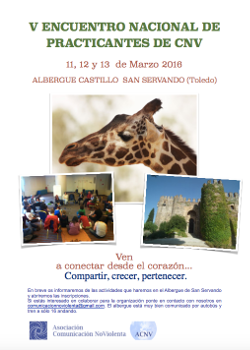 One more year, It is a joy and an honor for me to return to participate in the V Meeting of Nonviolent Communication Practitioners organized by the Association for Nonviolent Communication, facilitating my workshop this year “Nonviolent Communication and Focusing. The bodily dimension of needs”.
One more year, It is a joy and an honor for me to return to participate in the V Meeting of Nonviolent Communication Practitioners organized by the Association for Nonviolent Communication, facilitating my workshop this year “Nonviolent Communication and Focusing. The bodily dimension of needs”.
Full event dates: Friday 11 to Sunday 13 March 2016.
Place: Hostel San Servando
Cuesta de San Servando s / n
Toledo
To read the full information, request clarification and register, go to specific web page of the event.
To learn a little about the theoretical bases of what we are going to work on, since Marshall Rosenberg himself was part of the process of Focusing in some listening sessions and recommended it, You can consult my article “Combining Focusing and Nonviolent Communication. Reflecting deeper implications for”, published in the issue of 2014 of The Folio. A Journal for Focusing and Experiential Therapy, the official academic journal The Focusing Institute (Focusing Institute of New York).
I hope we can see each other there.
Xavier
[Original entry 1 March 2016, actualizada a 13 March 2016, event end date].
my article “Play the yes’ in the 'no'” (2011)
14 December 2015.
Tags: CNV, Interpersonal communication, Education, CI Spirals, My Classifieds, For parents, Texts CNV
This weekend I had the honor of participating in the I Congress on Emotional Education Navarra, organized by Formed parents. It was a conference organized with great interest, with great care and a good dose of courage. My presentation was specifically about “Affective education that protects against sexual abuse”, one of the themes that work from Spiral Consulting Children, of which I am a founding member. But in the end there was a panel discussion with questions for all speakers, we were sharing with the moderation of Sonsoles Echevarren, journalist from Diario de Navarra. It was a very interesting time, and although the questions were addressed to each speaker, at the end there were many in which we participate several more. In this context a very interesting question arose, “How do you listen to a child who refuses to leave the park?”. interesting and valuable answers were given, and I brought my contribution: “Listening yes’ in the 'no'”.
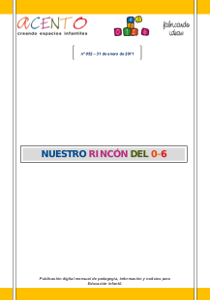 Rescue in this blog because my article 'Listen to “yes” in the “no”‘, which it was published in the number 52 (January 2011) Magazine Our corner of 0-6, published by ACCENT (He continues no longer releasing new numbers, although still available). This article development more broadly what I argued then: When a person (and a boy or girl is also a person) dice “no”, He is saying “yes” many things, and if we listen to the entire message, we can create a deeper connection and find a satisfactory solution for all parties. The article begins:
Rescue in this blog because my article 'Listen to “yes” in the “no”‘, which it was published in the number 52 (January 2011) Magazine Our corner of 0-6, published by ACCENT (He continues no longer releasing new numbers, although still available). This article development more broadly what I argued then: When a person (and a boy or girl is also a person) dice “no”, He is saying “yes” many things, and if we listen to the entire message, we can create a deeper connection and find a satisfactory solution for all parties. The article begins:
mother, two and a half years, She does not want her coat to go outside. Joseph, four years, You do not want to lose the swing to go home. Irene, of five years, He does not want to go to sleep. Why not do those things that as adults we seem perfectly reasonable?
And what do we do next? ¿We yield and do what they want? Then we feel bad because we are not working to their education, and also it gives us the feeling of leaving aside what we as people also want. Would you force them to do what we want? Then we have guaranteed discussion and bad environment for a long time, long term and we are teaching them that in the end the important thing is to have power or strength, and that dialogue only serves when it is weak. In my personal and professional experience there is a third way, based on a deeper communication in each of these situations. And one of the skills that we developed in the workshops I facilitate is the ability to listen to what they say “yes” our children when they say “no”.
Download the full article “listen to the “yes” in the “no”‘
Hope you find it interesting.
Xavier
My article on “Children and death”
31 October 2015.
Tags: Interpersonal communication, Mourning, Education, My Classifieds, For boys and girls, For parents, Psychotherapy, Therapy, Other Texts
In these final days of October the theme of death more frequently in the lives of children arises. Since the celebration of the Day of the Dead in certain families to all events of a different color of the Halloween, the reality is that it is a time when children can ask questions about death, and it is convenient to have prepared certain attitudes and listening spaces and answers.
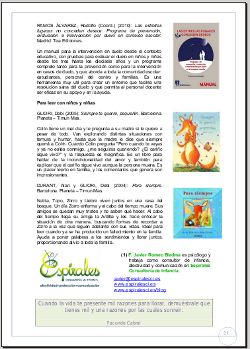 I wrote in 2011 an article that recovery here, “Children and death”, to remember some useful clues. In the article, published in the journal Our corner of 0-6 - ACCENT directed Childhood Education, They explore three key areas:
I wrote in 2011 an article that recovery here, “Children and death”, to remember some useful clues. In the article, published in the journal Our corner of 0-6 - ACCENT directed Childhood Education, They explore three key areas:
- The perception of death at different ages (between zero and six years, which it is the subject of the magazine).
- Some basic guidelines to accompany children to death.
- recommended reading, separate readings for families and professionals and stories to read with children.
Article framing and start with this paragraph:
For a long time it was thought that children did not suffer grieving process until older ages. However, research in the field of addiction have shown that pass through grieving process from the earliest ages, although it does not manifest like adults until later. Therefore it is necessary to speak of death (and not hide it for fear of damaging them) when it happens (or when it will happen, in the case of terminally ill), to understand 1) that the person is definitely going and 2) that the person does not leave voluntarily, and also so they can say goodbye, because if these concepts are not clear and not a farewell occurs, a pathological mourning may appear. And so it is important that we listen and pay attention to what happens inside when the death occurs in their lives.
[cite as: ROMEO BIEDMA, Francisco Javier (2011): "Children and death" Our corner of 0-6 - ACCENT, 60, 17-21.]
I hope that these reflections will serve to accompany this topic to children in your environment. Death is an inevitable part of life, and how better integrate, They will live more fully, our children and us.
I wish you a commemoration consciousness,
Twitter True Connection More
20 March 2015.
Tags: Agenda filed, CNV, Interpersonal communication, Focusing, My Classifieds, Psychotherapy, Therapy, Webs
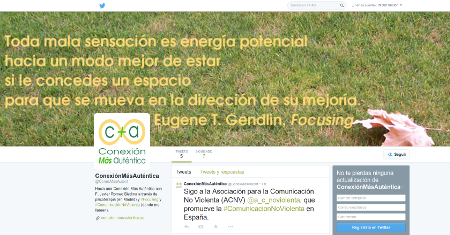 Taking advantage of spring begins today, More Authentic Connection has already Twitter, ConexMasAutent, where they appear different entries published, as well as recommendations and other matters of interest Focusing, interpersonal communication based on Nonviolent Communication, personal development in general and psychotherapy.
Taking advantage of spring begins today, More Authentic Connection has already Twitter, ConexMasAutent, where they appear different entries published, as well as recommendations and other matters of interest Focusing, interpersonal communication based on Nonviolent Communication, personal development in general and psychotherapy.
I hope that is helpful.
Xavier
NVC Dance Floors: practice Nonviolent Communication in a holistic manner
25 September 2014.
Tags: CNV, Interpersonal communication, Education, In English, My Classifieds, For Teens, For boys and girls, For parents, Psychotherapy, Therapy, Texts CNV, Videos
The NVC Dance Floors have already appeared in the version in Castilian, in which I have worked, and are also available videos subtitled in Spanish.
Bridget Belgrave and Gina Lawrie, Certified trainers for the Center for Nonviolent Communication (Center for NonViolent Communication, CNVC), years they created a great tool to teach and practice Nonviolent Communication (CNV). As they themselves have in submission, the NVC Dance Floors (NVC Dance Floors) They emerged through a series of steps to facilitate the practice of Nonviolent Communication with a spatial maps that allow use body size to work the emotional dimension, the way you see in this video:
In summer 2009 formarme had the pleasure to meet with Gina and Bridget, From there already work resumed translation and adaptation to the Castilian, an effort in which we have helped many people and I have coordinated for a while. So it is a pleasure to spread a simple tool and yet so deep, finally in Spanish, in which we care to include the largest possible number of Spanish version.
My experience is that the NVC Dance Floors the people can practice with just a few initial knowledge of Nonviolent Communication (In fact I sometimes use in introductory workshops). Even people who do not know the process of Nonviolent Communication itself (children, and adolescents, therapy clients) They can easily cross it with help from someone more experienced.
The NVC Dance Floors combine the visual, corporal and language, so that experience occurs through more channels and experience is deeper. And there are nine “dances” different, with names such as “The Dance of the 13 Steps”, “Integration and Dance Connection”, “The Dance of Anger / Rage, Shame and Depression”, “Dance of Yes and No”, The “Transform the pain of unmet needs in the Beauty Needs”.
Further, in 2013 they released some videos that explain three of these dances, in a neat edition that includes Spanish subtitles.
If you want to buy the dance floor CNV in different formats (as a download in PDF, on paper, plasticized version…) and DVDs to learn them at home or in group practice, you can visit its online store, Life Resources.
And if you want to count on me to try the dance floor in one session or in specific workshops, I will be happy to accompany.
I hope you like.
Xavier
Article “Crossing Focusing and Nonviolent Communication” in The Folio 2014 (The Focusing Institute)
25 June 2014.
Tags: Agenda actual, CNV, Interpersonal communication, Focusing, In English, My Classifieds, Texts CNV, Textos Focusing
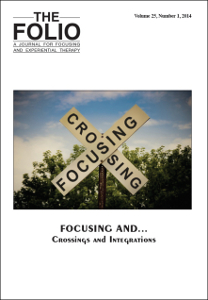 I am happy to share this article that The Focusing Institute has published in The Folio. A Journal for Focusing and Experiential Therapy, its academic journal, in its volume 25 of 2014. My paper “Crossing Focusing and Nonviolent Communication. Reflecting for deeper implications“ appeared at the beginning of 2014 and it has just been published digitally with free access and PDF format in the official website of The Folio.
I am happy to share this article that The Focusing Institute has published in The Folio. A Journal for Focusing and Experiential Therapy, its academic journal, in its volume 25 of 2014. My paper “Crossing Focusing and Nonviolent Communication. Reflecting for deeper implications“ appeared at the beginning of 2014 and it has just been published digitally with free access and PDF format in the official website of The Folio.
[Update February 9th 2017] Download the Japanese version of the article, “The intersection of the focusing and the non-violent communication - towards the deeper implications tell-back”, and read the story of its translation (in Spanish) by Madoka Kawahara (Kawahara circle) y Mako Hikasa (Mako Hikasa). thank you very much!
I leave here the abstract:
ABSTRACT
Both Focusing and Nonviolent Communication (NVC) are based on the idea that people get insights and their inner processes get carried forward when some of their words are reflected. Reflection enhances connection both with oneself and with the companion. And reflection brings deeper implications, as implied aspects come into existence and become conscious.
However, Focusing and Nonviolent Communication put the stress on reflecting different aspects of the original communication. Focusing follows felt senses in the body as a new way to create new meaning. Nonviolent Communication tries to find the universal needs that are at the core of every human action. Focusing and Nonviolent Communication have been crossed in different ways (a short revision of some crossings is explored in this paper). Focusing can be enriched by introducing a new awareness for needs, especially when Asking. And Nonviolent Communication can be enhanced by a new sensitiveness to the original expressions of the person –not just trying to “translate” everything, but also valuing habitual language as metaphors.
When both processes are combined and the companion/therapist reflects aspects of both levels of awareness, the person achieves relevant results as deep implications emerge.
Keywords: Focusing, Nonviolent Communication (NVC), Empathy, Reflect, Crossing.
For Spanish speakers, Go to this post in Spanish.
I hope that you will enjoy it and I will love reading your comments,
Xavier
